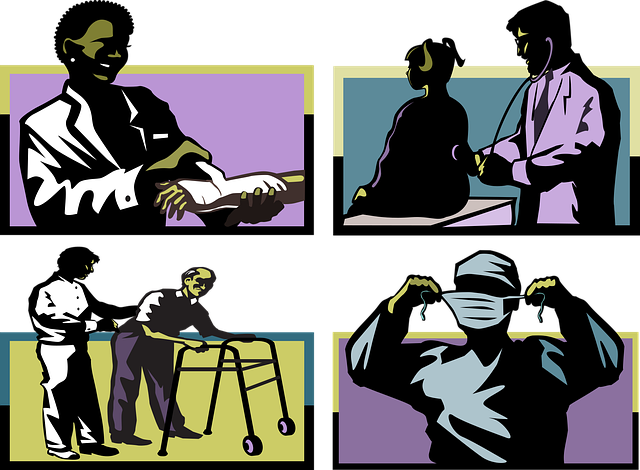
Are you unsure which health career to pursue? There are many options. This article should have given you an idea of your options. You will also find actionable steps to help get that dream job. Consider asking yourself a few questions to help you decide what career you want to pursue. Healthcare is a great career choice if your passion is helping people.
Anesthesiologist
If you are interested in a job that is high-paying and high-demand, anesthesiologist might be a good choice. This occupation is highly respected and has solid prospects for advancement and upward mobility. The average American works into their 60s. Anesthesiologists enjoy a fulfilling profession that allows them to have a good work-life balance. Anesthesiologists' career prospects are excellent if they enjoy a fast-paced work environment with a high degree of autonomy and a balanced lifestyle.
High school is where you start the education necessary to become an anesthesiologist. For students interested in this career, they should take advanced science classes and do volunteer or paid work experience at a hospital. The typical four-year residency program for anesthesiologists is completed after students graduate. Anesthesiologists might focus on critical care, pain medicine, education, research or education.
Assistant in occupational therapy
Occupational therapy assistants have a growing demand due to the aging population of baby boomers. This occupation is also growing at a faster rate than the average, with employment of these professionals projected to increase by 29% from 2018 to 2024. Occupational therapy assistants usually have at least an associate's degree and must obtain certification. A certificate program is required to be a certified occupational therapy assistant.

Occupational therapy assistants gain a deep understanding of the human anatomy and are able to work with various patient groups. They are also provided with training in healthcare industry management as well as best practices. Their knowledge base will expand and their clinical reasoning will improve. The benefits of becoming an OTA is obvious. Occupational therapy assistants can help millions of people improve their quality of life. An Occupational Therapy Assistant (OTA) can have a rewarding career.
Paramedic
Paramedics offer many advantages to those who are thinking about a career. Paramedics have a low-stress job with solid advancement prospects and a good work-life balance. Plus, a paramedic or EMT can work as a supplement to an income while in school. Below are some of the benefits to becoming an EMT or paramedic. These include the ability and ability to work well under pressure as well as being able to remain calm and composed under pressure. This kind experience will be highly valuable in medical school applications. EMTs can also prepare to take the MCAT.
Paramedic training is similar to other health career options. It requires an associate's degree. You can find paramedical training programs at most community colleges or universities that require between 200 hours and 400 hours. After graduating, students will receive a certification for cardiopulmonary resuscitation. Many of these programs require additional coursework, such as in drug abuse, behavioral crisis, and administering medication. Paramedic training may take between two and three years, depending on where you go.
Physician
A doctor on a list of health career options is likely to have a high education. The aging population wants to live long, healthy lives and health care professionals are highly sought-after. New technologies in healthcare are also expanding options. There are many ways to become a physician. These are the options.

As the highest-paid members of the health care profession, physicians and surgeons earn a very good salary. On average, physicians earn more than $167,000 annually. Although salaries may vary widely, physicians tend to earn higher than other health care professionals such as nurses and primary-care caregivers. Doctors enjoy an excellent standard of living, and are one of the highest-paid professions. Physicians enjoy working with many different patients, as well as high salaries.
FAQ
How can I live my best life everyday?
To live a happy life, the first step is to discover what makes you happy. Once you have a clear understanding of what makes you happy you can go backwards. You can also ask others how they live their best lives everyday.
Dr. Wayne Dyer's book "How to Live Your Best Life" is also available. He talks about finding happiness and fulfillment in all aspects of our lives.
What are the 7 tips to have a healthy life?
-
You should eat right
-
Exercise regularly
-
Sleep well
-
Make sure to drink plenty of water.
-
Get enough rest
-
Be happy
-
Smile often
What are the top 10 healthy habits?
-
Breakfast is a must every day.
-
Don't skip meals.
-
Maintain a balanced diet.
-
Drink lots of water.
-
Take care of yourself.
-
Get enough sleep.
-
Avoid junk food.
-
Daily exercise
-
Have fun
-
Meet new people.
What is the difference in a virus and bacteria?
A virus, a microscopic organism, is incapable of reproducing outside its host cell. A bacterium can be described as a single-celled organism which reproduces by splitting in two. Viruses are very small (about 20 nanometers) while bacteria are larger (up to 1 micron).
Viruses can be spread by contact with bodily fluids containing infected substances, such as saliva, urine and semen. Bacteria are often spread via direct contact with contaminated surfaces or objects.
Viral infections can also be introduced to our bodies by a variety of cuts, scrapes or bites. They may also enter through the nose, mouth, eyes, ears, vagina, rectum , or anus.
Bacteria can enter the body through wounds. They can also get into our bodies via food, water or soil.
Both bacteria as well as viruses can cause illness. Viruses can not multiply within the host. They only cause disease when they infect living tissue.
Bacteria can multiply within their hosts and cause illness. They can invade other areas of the body. To kill them, we must use antibiotics.
What is the best way to eat?
Many factors influence which diet is best for you. These include your age, gender and weight. You also need to consider how much energy you expend during exercise, whether you prefer low-calorie foods, and if you enjoy eating fruits and vegetables.
Intermittent fasting is a good option if you're trying to lose weight. Intermittent Fasting means that you eat only specific meals throughout your day and not three large meals. This approach may prove to be more beneficial than traditional diets that have daily calorie counts.
Research suggests that intermittent fasting may increase insulin sensitivity and lower inflammation. This can result in a reduction in blood sugar levels and a reduced risk of developing diabetes. Other research suggests that intermittent fasting may promote fat loss and improve overall body composition.
What are 5 ways to live a healthy lifestyle?
Living a healthy lifestyle involves eating right and exercising regularly. You should avoid processed foods, sugar, or unhealthy fats. Exercise strengthens your muscles and helps you lose calories. Sleeping enough can improve memory and concentration. Managing stress reduces anxiety and depression. Fun keeps us happy and healthy.
Statistics
- WHO recommends consuming less than 5% of total energy intake for additional health benefits. (who.int)
- The Dietary Guidelines for Americans recommend keeping added sugar intake below 10% of your daily calorie intake, while the World Health Organization recommends slashing added sugars to 5% or less of your daily calories for optimal health (59Trusted (healthline.com)
- Extra virgin olive oil may benefit heart health, as people who consume it have a lower risk for dying from heart attacks and strokes according to some evidence (57Trusted Source (healthline.com)
- In both adults and children, the intake of free sugars should be reduced to less than 10% of total energy intake. (who.int)
External Links
How To
What does the word "vitamin" mean?
Vitamins can be described as organic compounds found in food. Vitamins help us absorb nutrients from foods we eat. The body cannot make vitamins; therefore, they must be obtained from food.
There are two types vitamins: water soluble or fat soluble. Water-soluble vitamins dissolve easily when they are dissolved in water. You can find vitamin C,B1 or thiamine, B2 or riboflavin and B3 or niacin, B3/niacin, B6/pyridoxine, folic Acid, biotin and pantothenic Acid as examples. Fat-soluble vitamins are stored in the liver, fatty tissue and kidneys. Vitamin D, E, K and A are some examples.
Vitamins can be classified by their biological activity. There are eight main groups of vitamins.
-
A - Vital for normal growth and maintaining good health.
-
C – essential for proper nerve function.
-
D - Essential for healthy teeth and bones.
-
E - Required for good vision & reproduction
-
K - Essential for healthy muscles and nerves.
-
P - essential for strong bones, teeth and tendons
-
Q - Aids digestion and iron absorption
-
R - Red blood cells are made from red blood cells.
The recommended daily allowance (RDA) of vitamins varies depending on age, gender, and physical condition. The U.S. Food and Drug Administration (FDA) sets the RDA values.
For example, the RDA for vitamin A is 400 micrograms per dayfor adults 19 years or older. Pregnant women require 600 micrograms daily to support fetal development. Children ages 1-8 require 900 micrograms per day. Infants below one year old require 700mg per day. But, between 9 months to 12 months, the amount drops to 500mg per day.
Children between the ages 1--18 years old who are overweight or obese require 800 micrograms per Day, while those who are overweight or obese need 1000 micrograms. To meet their nutritional needs, children underweight and obese require 1200 micrograms a day.
2200 mg of vitamin A per day is required for children aged 4-8 who have been diagnosed by anemia.
2000 micrograms per person is necessary for general health. Women who are pregnant or breastfeeding need 3000 micrograms per day due to increased nutrient requirements.
1500 micrograms is the recommended daily intake for adults aged 70+, who lose approximately 10% of muscle each year.
Women who are pregnant or nursing need more than the RDA. Pregnant and breastfeeding women require 4000 micrograms each day during pregnancy and 2500 Micrograms each day after delivery. Breastfeeding mothers require 5000 micrograms daily when breast milk production is occurring.